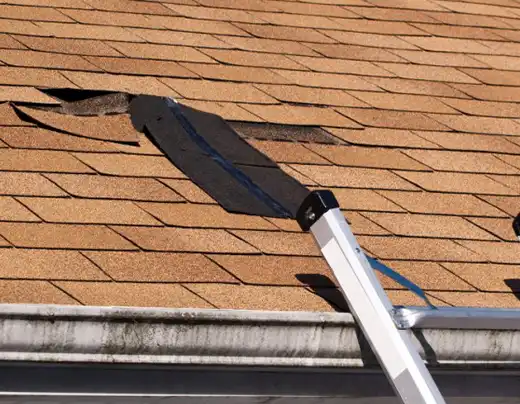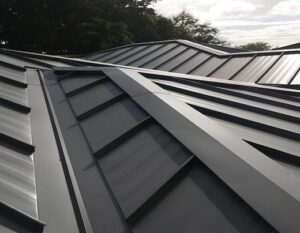Asphalt Shingle Materials and Accessories
Asphalt Shingle Materials and Accessories are manufactured from four essential components: asphalt, fillers, reinforcing mat and surfacing. Asphalt strips and laminated strip shingles also use adhesives to provide self-seal strips.
Self-sealing Strip
Asphalt strip shingles and laminated shingles contain adhesive, self-sealing strips. A self-sealing strip has a heat activation element, and it gives the asphalt shingle system an increased wind resistance by securing the edge of the shingle. Similar to SBS polymer-modified bitumen, it may add a modifier to the adhesive to make it tackier, allowing it to seal at lower temperatures and designed to adhere to the underlying shingle course.
Wind Resistance
Wind resistance of asphalt shingle roof systems is primarily determined by the specific asphalt shingle product used.
Impact Resistance Ratings
Impact resistance rating, a qualitative assessment of an asphalt shingle’s resistance to hurricane debris, is primarily determined by the specific asphalt shingle product used. Asphalt shingle products are typically tested and classified for impact resistance.
Algae Resistance
The dark stains noticeable on rooftops are accumulations of blue-green algae, single-cell organisms. The stains are readily recognizable and appear darkest near the top of a roof and may thin out as they extend downslope on a roof’s surface. Some severely affected roofs have dark stains from eave to peak. There is no evidence blue-green algae harm asphalt shingles; it is considered an aesthetic issue by asphalt shingle manufacturers.
Shingle Fasteners
Fasteners are used to attach asphalt shingles to the substrate. Roofing nails typically are the fasteners used. Roofing nails should be long enough to penetrate all layers of roofing materials and achieve secure anchorage into a roof deck. Nails should extend a minimum of ⅛ inch through the underside of the roof deck, which could be as a minimum of 1/2 in plywood or other acceptable wood panel decks less than 3/4 of an inch thick. For wood plank or wood board roof decks, nails should penetrate at least 3/4of an inch.
Asphalt Roof Cement:
Roof cement is commonly used in the application of asphalt shingle roof systems. The asphalt used in the manufacture of roofing cement is either air-blown asphalt or polymer-modified asphalt. The asphalt is thinned, or “cut back,” with a petroleum-based solvent to create a soft, workable mixture. Some roofs cement contain mineral fibers as stabilizers. Some manufacturers now offer polymer-modified bitumen roofing cement. There are two common types of asphalt roof cement: flashing cement and lap cement. Flashing cement is commonly used on vertical surfaces and has an able trowel consistency. Lap cement is used more specifically for bonding asphaltic materials together, and their consistencies are characterized as either trowel able or brushable.
Flashing Membrane Cement:
Membrane materials typically are used to weatherproof details in asphalt shingle roof systems. Membrane materials commonly used in these applications are polymer-modified bitumen sheets and self-adhering polymer-modified bitumen sheets.
Lap cement:
Used more specifically for bonding









